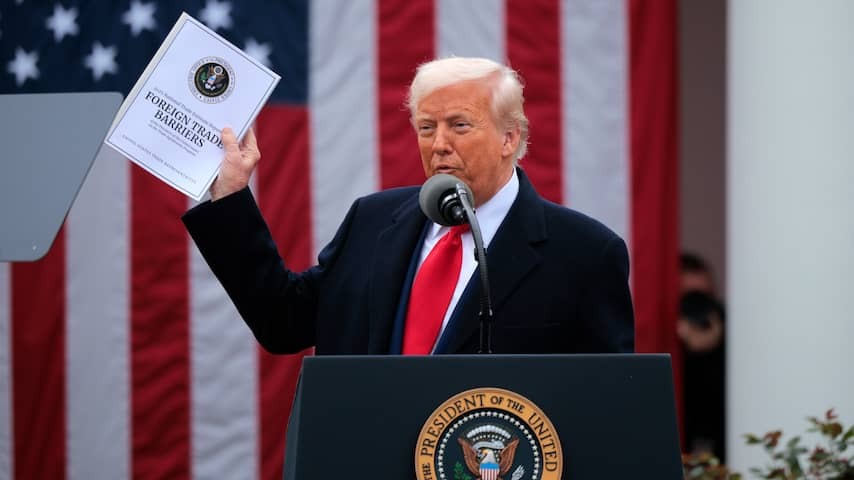
In a week, a ninety-day pause in the trade dispute between the United States and the European Union will expire. But even though there is no trade deal yet, US President Donald Trump doesn’t want any extension.
At the beginning of April, the president announced import tariffs on goods from almost all countries. For the EU, he had a tariff of 20 percent in store. Brussels then threatened with retaliatory tariffs. Shortly thereafter, Trump lowered many tariffs to 10 percent for a period of ninety days. That period expires on July 9.
Trump wanted to use the intervening months to conclude trade deals with, among others, the EU. But an agreement has not yet been reached. Earlier, there were voices to extend the pause period, but the president is not listening.
In an interview with the American broadcaster Fox News, Trump said that he would soon send letters to countries containing information about which import tariffs they can expect. “We are looking at how a country treats us – are they good, are they not good – with some countries we don’t care, we just send them a high percentage,” the president explained.
“The letters will say: Congratulations, we allow you to shop in the United States. You will pay tariffs of 25 percent, or 35 or 50 or 10 percent for that.”
There is some debate about this last point. It is the Americans themselves who have to pay the import duties. Nevertheless, Trump’s statements put extra pressure on other countries, including EU countries, to quickly reach an agreement.
It is still unclear exactly what such a trade deal should look like. The Americans did send a letter of intent to the EU last week, but little is known about its contents. Moreover, there would have been little about which concessions the US is willing to make.
EU would like low tariffs on cars
The EU has also not released much about what it wants to see in a trade agreement. However, Bloomberg recently reported, based on anonymous officials, that Brussels would accept if the US levies 10 percent tax on most European goods. In return, tariffs on a number of other European products would have to be lowered or disappear.
This includes aircraft, semiconductors, alcoholic beverages and medical products. In addition, tariffs on cars, steel and aluminum should be lowered. It is unclear whether the US is prepared to do so.
If no agreement is reached, Trump threatens to increase tariffs on European goods again to 20 percent or perhaps even more. Earlier he even threatened with 50 percent.
EU considers retaliatory tariffs
In the meantime, Brussels has come up with a list of American products for which it wants to introduce an import tariff if no agreement is reached. This includes agricultural goods, helicopters and American whiskey. European countries annually import 95 billion euros worth of these goods from the US.
The EU prefers an agreement. This should limit the damage to European companies. Among others, the French wine sector and the German car manufacturers fear losing many American customers if Trump introduces high tariffs for these products.
For example, BMW and Mercedes-Benz sell many cars in the US, which will probably become considerably more expensive due to the tariffs. The car manufacturers are afraid of losing market share at a time when they are already struggling due to strong Chinese competition and a difficult transition to electric driving.
What exactly are import tariffs?
Although Donald Trump sells his import tariffs as a punishment for foreign countries, it is initially the Americans themselves who pay for them. The measure means that American companies that purchase foreign products must pay extra tax to the American government.
Companies often incorporate these extra costs into their sales prices, so that the levy ultimately ends up on the consumer’s plate.
However, the measure can make domestic alternatives attractive. For example, Trump hopes that Americans will buy fewer German cars in the future and instead opt for American models. It should also fill the treasury. Furthermore, he hopes to entice foreign companies to open a factory in the US, because their products are then free of tariffs.
Many economists doubt whether companies will indeed do this en masse. In addition, the companies that move run the risk of still having to pay tariffs if their suppliers do not move with them.